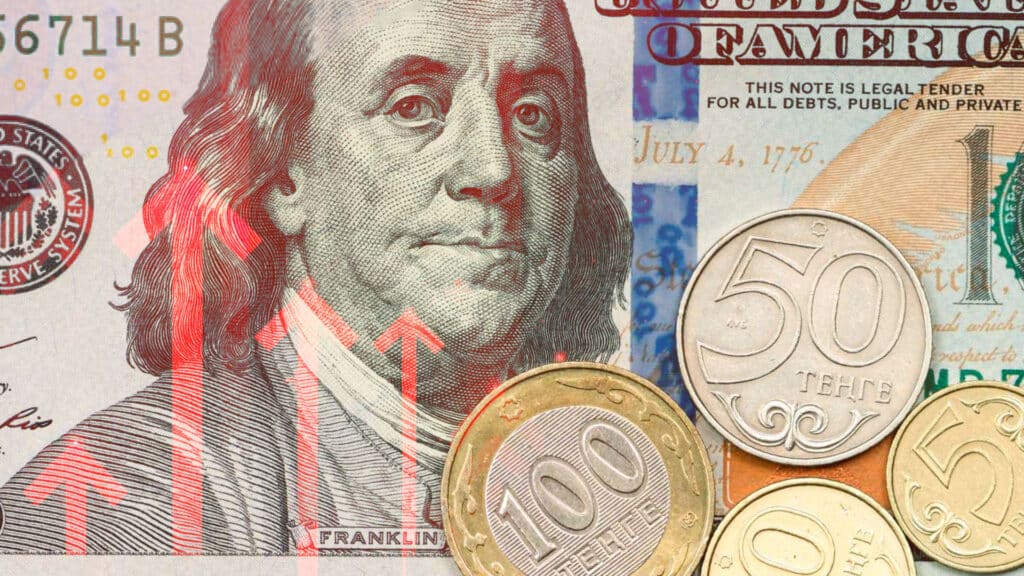Kazakhstan’s debt to major investors climbs 4%

Kazakhstan’s foreign liabilities increased to $259.2 billion in the second quarter (Q2) of 2024, a 4% rise year-on-year (YoY). According to the National Bank of Kazakhstan, a significant portion of this debt (77.4%) is concentrated in the hands of just 10 countries, with the Netherlands and the U.S. emerging as the major investors.
Quarter-on-quarter, Kazakhstan’s external liabilities grew by 5%. Since the end of last year, the increase has been 1.2% and in the previous five years, the growth has been 18%. This trend shows steady growth without major fluctuations.
As of July 1, the top 10 creditor countries and jurisdictions investing in Kazakhstan included the Netherlands, the U.S., Russia, China, the U.K., France, Bermuda (U.K.), Luxembourg, Japan and the UAE. Compared to Q1, the ranking has shifted slightly, though the top seven countries remained the same. The UAE, Japan and Switzerland rounded out the list in the previous quarter.
Last year, the U.K. ranked fourth, while China was sixth. By mid-2023, however, China had moved up, replacing the U.K in the fourth position. Also noteworthy is Luxembourg, which was absent from Kazakhstan’s top investors list last year. However, over the past year, its investments in Kazakhstan have nearly tripled, reaching $7.8 billion.
For at least five years, the Netherlands has been Kazakhstan’s leading investor. As of July 1, 2024, the Netherlands had invested $59.3 billion in the country’s economy, accounting for a quarter of Kazakhstan’s total commitments to foreign countries. This figure is 8.4% lower YoY. The Netherlands’ investments are concentrated in mining and open-pit development, amounting to $17.7 million, with more than 90% being direct investments.
The U.S. ranks second in lending to Kazakhstan’s economy, with $50.6 billion invested during the reporting period. This represents a 1.5% decrease YoY. Like the Netherlands, the U.S. primarily invests in mining and open-pit development, with $41.9 billion allocated to these sectors. Additionally, Kazakhstan’s financial and insurance market accounts for $6.7 billion of the country’s external liabilities.
Russia has been the third-largest investor in Kazakhstan since 2022. Before the full-scale invasion of Ukraine, Russia ranked fifth or sixth in terms of investments. As of July 1, 2024, Kazakhstan’s external liabilities to Russia amounted to $19.9 billion, marking a 19.5% increase YoY. Since 2019, this figure has grown 1.7 times. In 2024, Russia’s investments were primarily directed toward water supply, sewage facilities, waste management, wholesale and retail trade, car and motorcycle repair, transportation and warehousing, accommodation and catering services, information and communications, insurance and financial services, and manufacturing.
Kazakhstan’s international investment position, defined as the difference between assets and liabilities, improved from -$65.8 billion last year to -$59.9 billion now. The National Bank attributes this improvement to an increase in the balance of payment transactions (by $0.6 billion) and non-operational changes (by $7.2 billion).
Kazakhstan’s total assets amount to $199.3 billion, while liabilities stand at $259.2 billion. Most assets are portfolio investments ($87.2 billion), while liabilities are mainly direct investments ($176.8 billion). External assets have grown by $11 billion since the beginning of 2024, largely due to the acquisition and increase in the value of instruments such as stakes in foreign companies, foreign investment funds, money market funds and debt securities of foreign companies held by residents.
Foreign investments in Kazakhstan are heavily concentrated in the mining sector, accounting for $135.4 billion or over half of the country’s total foreign liabilities. Financial and insurance activities attract a significant portion as well, with investments reaching $32.6 billion. The manufacturing sector has also seen substantial foreign interest, with investments totaling $22.7 billion.

